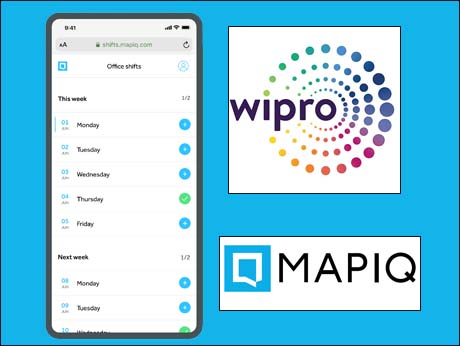
Bangalore, June 11 2020: Wipro Lighting in association with Mapiq, a Netherlands based company, has launched Office Shifts, smart office technology software designed to enable flexibility and maximize the utilization of office space for employees in a post-COVID-19 world. The software can be scaled and upgraded depending on the policy changes organizations need to make due to local government directives.
Due to the new norm of social distancing, in most offices, desks and workspaces availability will decrease by an average of 43%. This means only half the employees can be in office. Organizations need to align schedules and working patterns of employees and their teams. Besides the social distancing norm, going back to office raises concerns about safety and productivity among employees. Can they work safely and which spaces in the office can they access, how will they conduct their meeting will play on their mind. Keeping employees informed real-time and ensuring they are evenly spread in the office is essential
Says Anuj Dhir, Vice President & Business Head, Wipro Lighting “Fundamental changes to the way Organizations function and large office complexes operate has necessitated a complete rethink. Everyone has the safety and security of people as their top priority. Social distancing, sanitizing, and restrictions on meetings & gatherings necessitate a newer and efficient manner of functioning. This is where Mapiq’s Office Shifts technology is useful. It ensures both employee safety and productivity.”
Adds Ramakrishna Puranam, Senior General Manager – Sales, Wipro Lighting:“with this technology organizing teams together, anticipating and updating office capacity quickly, is simply hassle-free. The software is available as a subscription-based model built on SaaS (Software as a Service) model. Customers can pay either as per building, per month or per building, per year model. This makes it less capital intensive and easy to afford.”